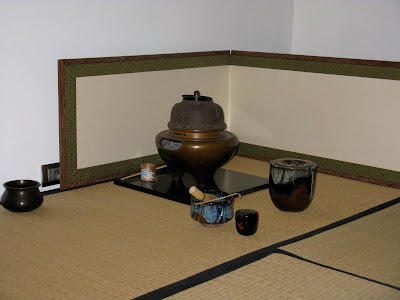


Non molto tempo fa sono stata a Carrara al Festival dell'Oriente invogliata dall'enorme pubblicità che gli viene fatta ogni anno e dal grande afflusso di visitatori.

Sono purtroppo rimasta molto molto delusa dalla grande disorganizzazione che hanno dimostrato. In uno dei padiglioni c'era un palcoscenico (piuttosto bruttino) in cui si alternavano vari tipi di scuole e praticanti di arti e sport di provenienza orientale. Purtroppo i partecipanti allo spettacolo non erano stati prima selezionati per cui sul palco si avvicendavano dai professionisti agli imbranati. (di più i partecipanti della seconda categoria).
Di fronte a questo palco un affollatissimo mercatino di bancarelle che vendevano oggetti (o reclamizzavano prodotti) di provenienza o stile orientale. Un mercatino esattamente come quello che si può trovare alla mostra dell'artigianato di Fortezza da Basso a Firenze, cioè niente di veramente speciale.
Negli altri padiglioni lo spazio era stato quasi interamente monopolizzato dalle arti marziali che occupavano più dei due terzi dell'intero complesso fieristico.
Per una persona, come me, non proprio entusiasta delle arti marziali, ma alla ricerca delle arti estetiche e del tè, non c'era quasi nulla.
Solo uno dei padiglioni offriva alcuni banchetti di arti giapponesi ma più che per divulgazione erano lì per lucro e, nell'insieme, risultavano anche assai "miseri".
Per quanto riguarda il tè c'erano solo due banchetti: uno reclamizzava un posto italiano dove viene fatta cerimonia del tè su prenotazione, l'altro vendeva scatoline di tè matcha e offriva agli ospiti orrendi assaggini di matcha diluitissimo in acqua fredda e servito in bicchierini di plastica!
Completamente assente la Cina che non compariva ne' per il tè, ne' per nessuna delle sue altre meravigliose arti.
Per finire è stato un grosso problema anche poter mangiare in quanto era stato allestito un self service che era strapieno (le file duravano mediamente 40 minuti) e al momento in cui una persona affamata riusciva ad avvicinarsi al bancone avevano già finito tutto! Non parliamo poi del fatto che al self service servivano solo piatti italiani (di scarsissima qualità) e niente di orientale! Sognarsi di trovare poi qualcosa di vegetariano o tanto meno vegano era decisamente improbabile.
Questa è stata decisamente un'esperienza da non ripetere e mi auguro che con il tempo gli amministratori si rendano conto che l'Oriente è grande (non è solo Giappone) e che le arti non sono solo quelle marziali (esiste cerimonia del tè, calligrafia, pittura, pittura su seta, poesia, arte dei nodi, origami, ikebana, danze tradizionali, cerimonie di vestizione, canto e musica, e moltissime altre ancora).




















